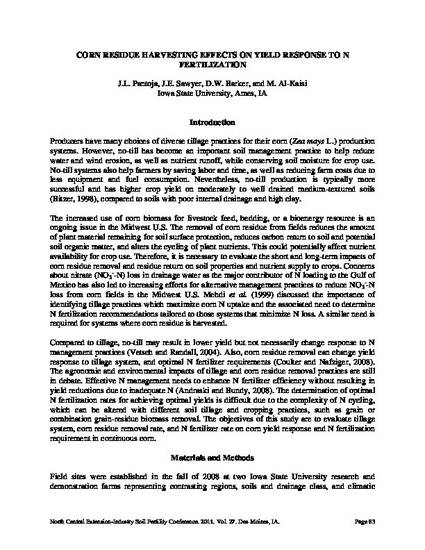
Presentation
Corn Residue Harvesting Effects on Yield Response to N Fertilization
41st North Central Extension-Industry Soil Fertility Conference
Document Type
Conference Proceeding
Disciplines
Publication Version
Published Version
Publication Date
11-1-2011
Conference Title
41st North Central Extension-Industry Soil Fertility Conference
Conference Date
November 16-17, 2011
Geolocation
(41.6005448, -93.60910639999997)
Abstract
Producers have many choices of diverse tillage practices for their corn (Zea mays L.) production systems. However, no-till has become an important soil management practice to help reduce water and wind erosion, as well as nutrient runoff, while conserving soil moisture for crop use. No-till systems also help farmers by saving labor and time, as well as reducing farm costs due to less equipment and fuel consumption. Nevertheless, no-till production is typically more successful and has higher crop yield on moderately to well drained medium-textured soils (Bitzer, 1998), compared to soils with poor internal drainage and high clay.
Copyright Owner
International Plant Nutrition Institute
Copyright Date
2011
Language
en
File Format
application/pdf
Citation Information
Jose L. Pantoja, John E. Sawyer, Daniel W. Barker and Mahdi Al-Kaisi. "Corn Residue Harvesting Effects on Yield Response to N Fertilization" Des Moines, IA41st North Central Extension-Industry Soil Fertility Conference Vol. 27 (2011) p. 83 - 89 Available at: http://works.bepress.com/john-sawyer/37/

This proceeding is from the 41st North Central Extension-Industry Soil Fertility Conference 27 (2011): 83. Posted with permission.